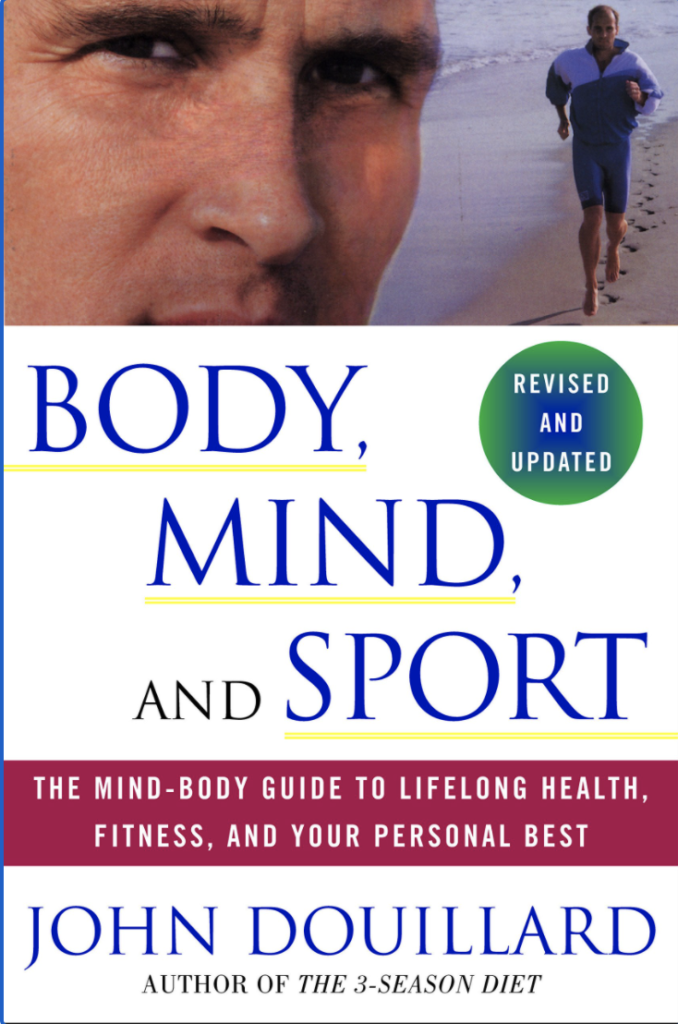There are some very good things that were written, produced, built, made, learned, discovered, or otherwise came in to being in the 90s… that we should remember. This was a time just before social media, with all collective knowledge right before the great digital shift, before the internet took over the world. These things, being mostly analogue, have possibly gotten the short end of the stick from our collective Third Millennium attention. That is why I will use this blog to occasionally write about some fascinating, useful, interesting, delightful, informative and generally value-add cultural phenomena from the last great analogue decade.

This first one is a book I just finished called ‘Body, Mind, and Sport‘ by John Duillard.*
I have chronic structural injuries and imbalances caused by accident, and deeper than that, by chance, circumstance and a dash of recklessness in my youth. I destroyed my knee in a snowboarding accident, and dislocated my sternoclavicular joint in a motorcycle accident a few years later. Both injuries are inoperable and both on the right side cause me to have chronic pain (knots in my back, and my knee swells up if I run more than a mile).
I had been training for a marathon when I blew my knee. After it healed, I have not been able to run more than a mile or two, for the last 15 years. But after reading this book, and practicing its method of ‘listening to my body’ during exercise, I run 2x per week each several miles, along with hiking and yoga and weight training the rest of the week. The impact on my life has been phenomenal: I have lost 15 lbs in the last 7 weeks, and am stronger than I have been since high school. It feels like I have superpowers.
The Point
Long story short, the book’s main thesis is that exercise should be a practice to integrate the mind and body, and the ‘no pain, no gain’ attitude towards fitness is actually destructive. First, the book runs through some exercises to identify the specifics of your body and energy and athletic types, based on Aurvedic practice. This includes diet, type of exercise, and also things to avoid for the three main types. These correlate roughly to ecto, meso, and endomorphs, though there is much more to it. Each type has an entire diet outlined for it as well as an exercise regimen.
The book then goes on to its main point- that we, like most mammals that run, evolved to breathe through our noses during normal exertion, and that breathing through the mouth is actually a stress-response, one we learned as kids stressed out by expectation or incorrect information, or simple illness. The entire second half of the book is about how to train yourself (and why) to exercise while breathing exclusively through your nose. For something supposedly natural, it’s a very unusual thing to attempt.
My Experience
But in the month since I have read this book, I have been practicing the techniques outlined by Dr, Douillard, and the results have been nothing short of spectacular. I am now running while breathing entirely through my nose. Not only has my breathing slowed down to about 16 breaths per minute during exercise, but my exertion and stress levels are minimal, and I end each run feeling fresh, energized, and rejuvenated rather than exhausted and stressed. My legs are strong, my knee remains stable, and I enjoy exercise immensely. I ‘work out’ 6 days a week! The book tries (and so far looks to succeed) in normalizing that experience that athletes talk about of being ‘in the zone’ – achieving perfect mind/body harmony such that everything just seems to flow.
The author is a doctor and athletic advisor who has spent his career proving the premise in this book, with lab testing, up to and including the Olympic level athletes and professionals. I will let the book stand on its own, but for anyone who has had stress injuries, or any other debilitating exercise experiences, or for those merely curious, I can’t recommend this book enough. The main premise is that, through a different, listening approach to exercise, we can return to the original (Greek, Ayurvedic) practices of mind-body integration that used to be the goal of exercise, before the obsession with winning took over.
And one final note about that- not only have these practices been used to win, but think about this: if you hate working out, or if you get injured, then winning will be the last thing you experience.
*I get no referral kickbacks from referencing anything on this site. I only talk about things I have tried and when possible I link to information, not purchase pages.
